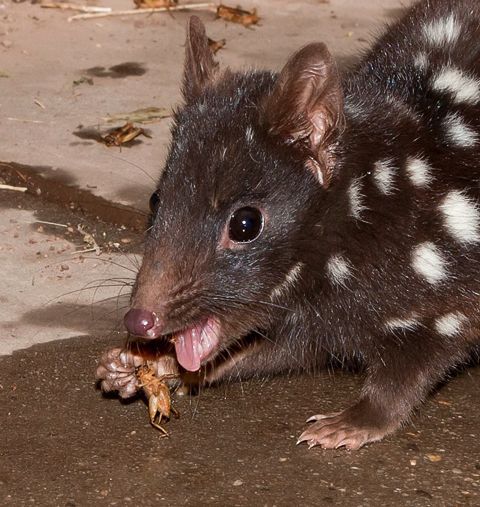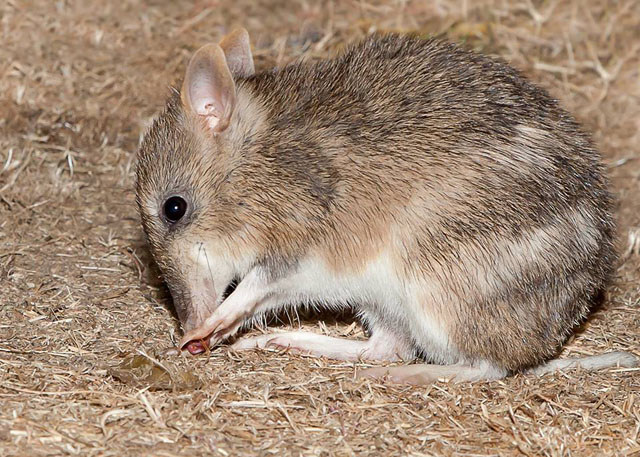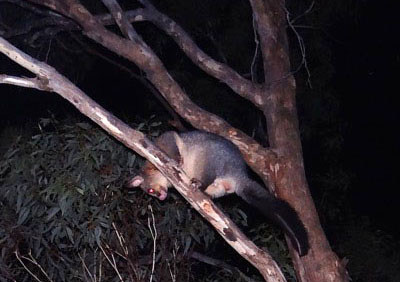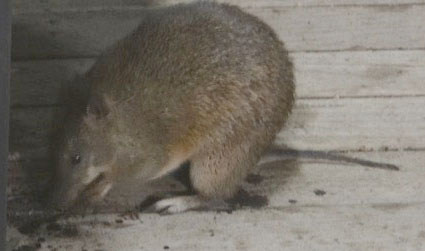Following a week of wet and windy weather, the evening of Saturday 16 May was fine and clear and provided perfect conditions for a night ramble at Mt Rothwell.
Mt Rothwell property is 450 hectares of land formerly owned by a member of the Chirnside family and contains woodland, granite outcrops and remnant native grassland. It is surrounded by predator-proof fencing which provides a safe haven for the native animals
The Friends’ group met our Volunteer Guide for the evening, John Holman at the Biodiversity Interpretation Centre.

We accompanied him as he fed rabbit portions to captive Spot-tailed and Eastern Quolls in their breeding enclosures. Another enclosure was home to Feathertail Gliders who were given nectar, fruit and mealworms.

Spot-tailed quoll devouring rabbit portion
We enjoyed a picnic tea after which John gave us a short talk about Mt Rothwell. He explained the importance of maintaining the fence and this is checked everyday to make sure there are no breaches which might allow foxes or cats to enter the sanctuary. Other priorities include dealing with long term environmental concerns including rabbit eradication, removal of Serrated Tussock and restoration through affiliation with Landcare.
After dark we started our walk.

Setting off for night walk
One of our first sightings was an Eastern Quoll.

Eastern Quoll
Sightings of animals
During the walk we saw the following animals:

Eastern Barred Bandicoots

Common Brushtail Possums

Southern Brown Bandicoots

Rufous Bettongs

Brush-tailed Rock Wallabies
Eastern-barred Bandicoots and Brush-tailed Rock Wallabies are critically endangered in Victoria and their populations at Mt Rothwell are crucial to the survival of these species.
We found the night walk very informative and the frequent sightings of rare native marsupials gave us a glimpse into the past and what the landscape may have resembled before the land was cleared for pasture with the introduction of sheep and cattle as well as feral predators such as cats and foxes.
We thanked John for his volunteer guiding before leaving the Centre and making our way home.

John
Our thanks to Jacqui Young, Reserve Officer for her support in organising the event, and to Di Trewenack and Graham Lee for their great photographs.
Kaye Traynor